The Best Types of Roses for Every Garden
Updated: Feb. 20, 2024
There are many types of roses to grow, from classic tea roses to sprawling climbing roses. Learn which one is perfect for your yard.
Choose the Best Type of Rose to Grow
If you aren’t sure where to start when picking the best types of roses for your garden, look no further! From classic red blooming hybrids to sprawling pink climbers, garden roses come in all shapes, colors and sizes. Before you toss any old rose plant into the ground, use this guide to find one that’s a perfect fit for your space.
Before you go to the garden center, here’s everything you need to know about how to grow roses.
Learn surprising facts about roses.
Shrub Rose
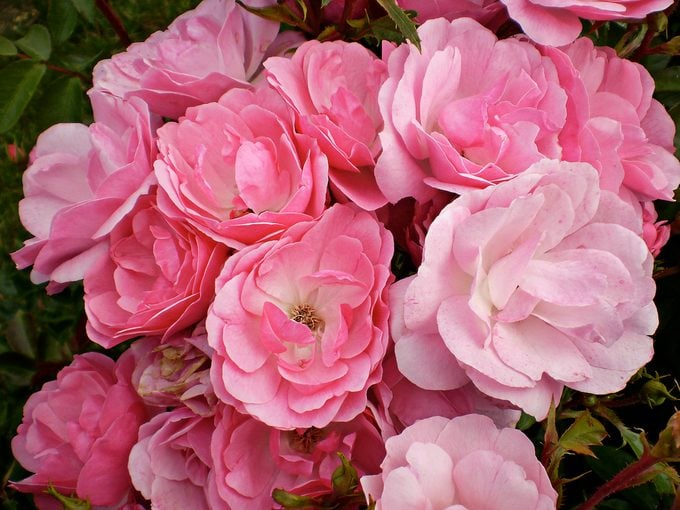
Shrub types of roses can grow upright, mounding or as ground covers. They’re so easy to live with and care for that you may not even think of them as roses. Their genes protect against diseases and pests that typically plague other roses. Shrub roses are generally cold hardy and rebloom throughout the growing season.
However, many shrub types carry little to no fragrance. If a sweet scent is important to you, check to see if fragrance is mentioned in the plant tag information, or buy one with a name that implies scent.
Grow shrub roses in masses or as companions to other plants, and choose from an array of colors, shapes and sizes. Brand names to look for include the Knock Out family of roses, Easy Elegance, Oso Easy and Oso Happy, David Austin, Griffith Buck, Kordes, Meidiland and Flower Carpet.
Roses not blooming? Here’s what to do.
Hybrid Tea Rose
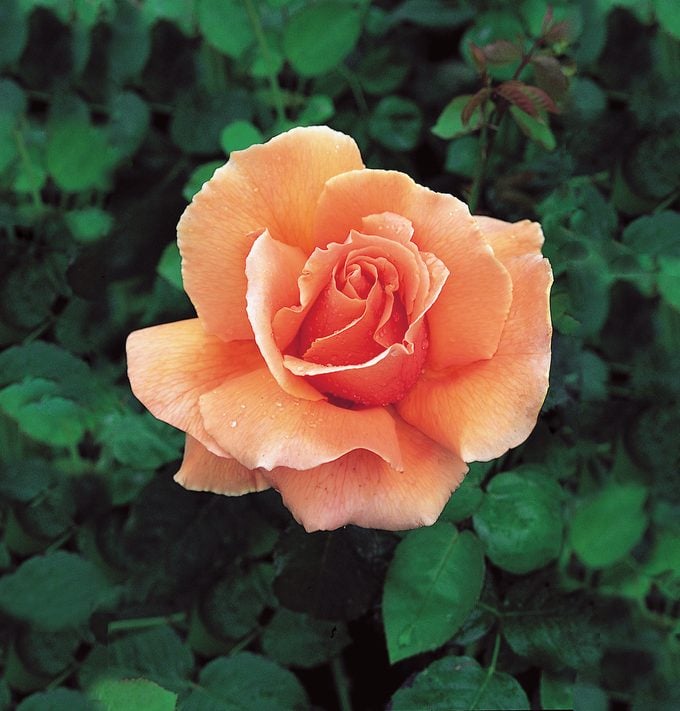
With gorgeous, classic flowers and a perfume-like scent to swoon over, hybrid teas probably come to mind when you think of traditional types of roses. The plants grow 4 to 6 feet tall with strong canes (main branches) and individual blooms. The foliage, which often falls prey to diseases, doesn’t cover the lower part of the canes, giving the plants a naked or barelegged look.
If that’s not your style, plant companion growers to help with screening the stalks. Hybrid teas require specific pruning regimens for best flowering. They prefer mild climates and need special protection in regions where winters are severe.
By the way, do you know how to prepare and prune roses for winter?
Miniature and Miniflora Roses
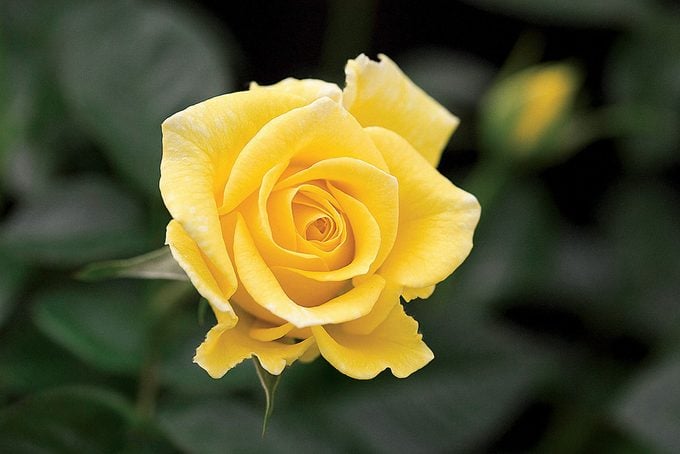
Miniatures come as short as 6 inches or as tall as 3 feet, with small, hybrid tealike blooms that grow solo or in clusters. Miniflora roses feature compact plants—up to 3 feet tall—but grow full-size flowers as wide as 3 inches.
Miniatures tuck well into the edges of flower borders and do well in pots. The term “patio rose” refers to any rose plants compact enough to grow in pots on a deck, not to any specific types of roses.
Psst—roses love garlic: find out why.
Climber and Rambler Roses
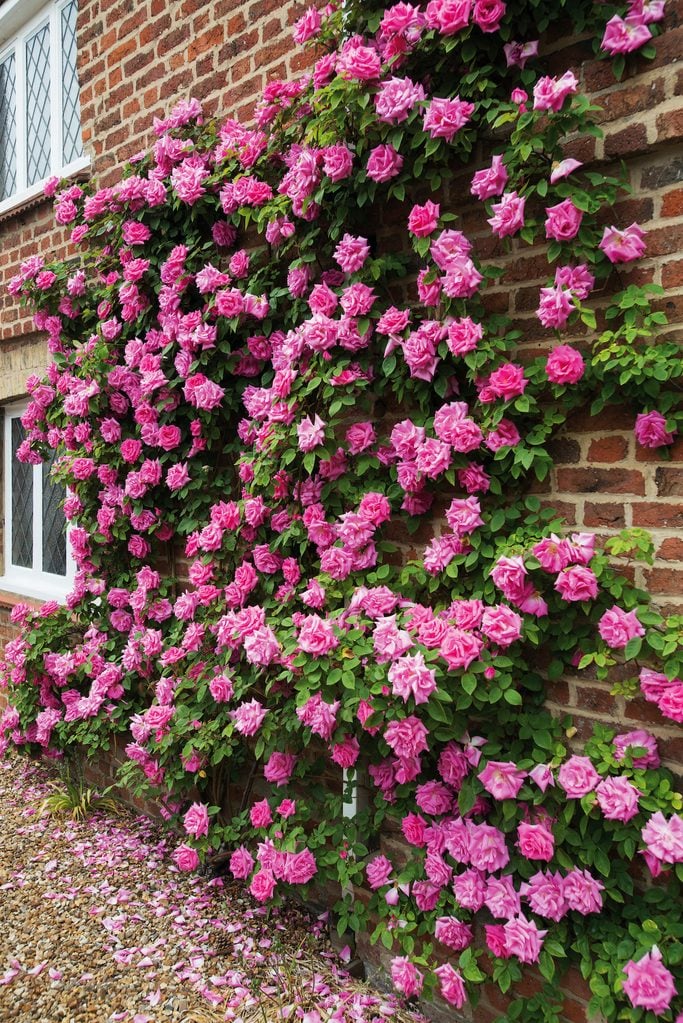
Climbers are repeat bloomers; ramblers are not. They come from a wide range of types of roses, but most are shrubs. Their canes—the thorny, woody stalks—stretch from 10 to more than 20 feet long. However, they must be lashed to supports with soft ties, since they can’t hold on by themselves. It may take two to three years for climbers to mature and fill in.
To promote better blooming, allow the canes coming from the base of the plant to grow to their full length. Keep the major ones as horizontal as possible to encourage better flowering and more shoots growing lower on the cane.
Different rose colors have different meanings. Here’s what you should know.
Floribunda and Grandiflora Roses
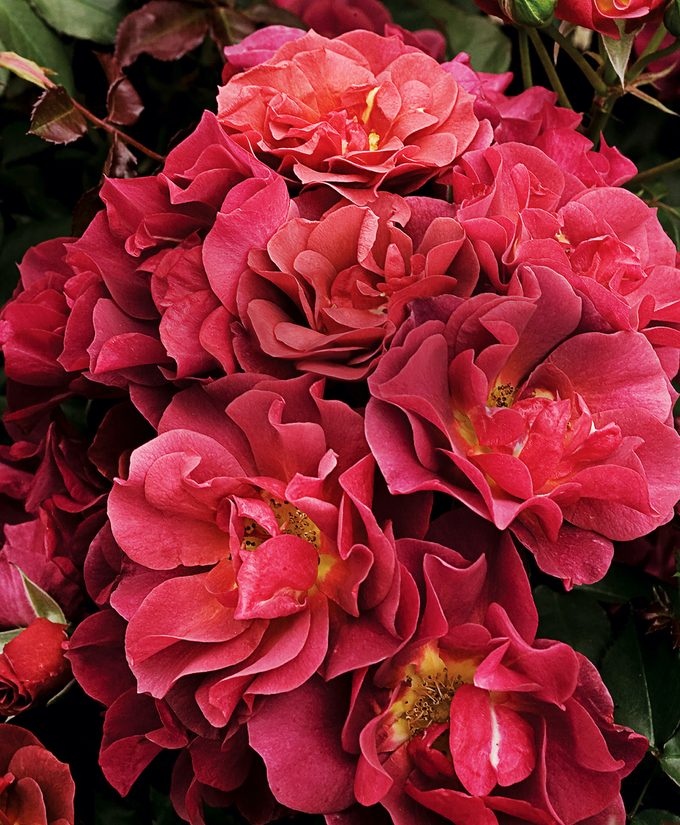
Spray roses, also known as floribundas, grow with several blooms in a rounded clump. Grandifloras resemble a blend of hybrid tea and floribunda roses, with large blooms produced both individually and in sprays.
“You get the whole color scheme and look of a hybrid tea rose with shrub rose performance,” says Natalia Hamill, a manager at Bailey Nurseries, which produces the Easy Elegance rose brands.
Floribundas and grandifloras both produce blooms that are more likely to have better fragrance than shrub roses.
See the top 10 best roses to grow.
Tree Roses
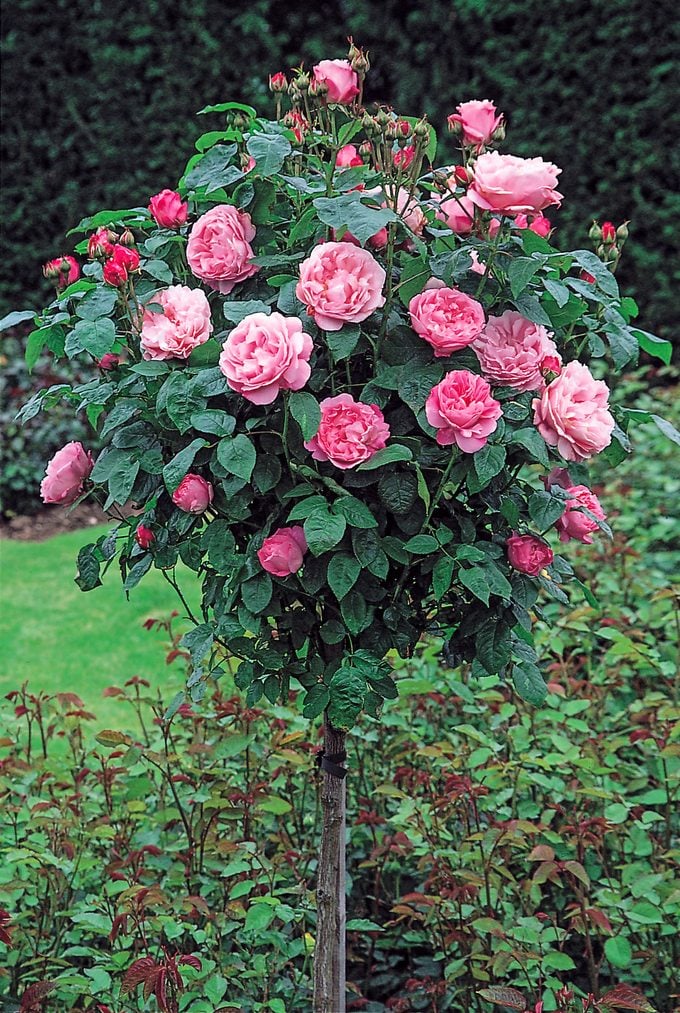
Tree roses, or standards, are formal and traditional. They may be from almost any rose category. Several buds are grafted to a sturdy hybrid or hardy rose cane to give it the shape of a small tree. Some even come with two different kinds of roses grafted onto the same cane.
Use standards as focal points, to line a path or as partners flanking doorways. They require staking and careful pruning, and work well in containers.
If you’re growing a tree rose in a cold climate, tuck it into a pot and overwinter it in an unheated space so it goes dormant but does not freeze.
This rugosa rose deserves lots of love.
5 Secrets for Rose-Growing Success
- Combine roses with other plants, including perennials, instead of isolating them. “Your garden should be an expression of what you want. There’s no recipe of what to do,” says Jacques Ferare, a vice president at Star Roses and Plants.
- Shop for roses labeled “own root,” which means they were grown from their own cuttings. Own-root roses survive cold winters and produce shoots from their own roots, leading to fuller, healthier plants.
- Choose newer varieties that have been bred to need less care.
- Find small sizes to grow in containers on a sunny patio or balcony. “They’ve been doing this in Europe for years,” says Natalia Hamill of Bailey Nurseries.
- Plant roses in full sun, where most of them bloom best—though you may find some that grow with as little as six hours of sun per day.
Next, get expert tips for planting bare root roses.




















